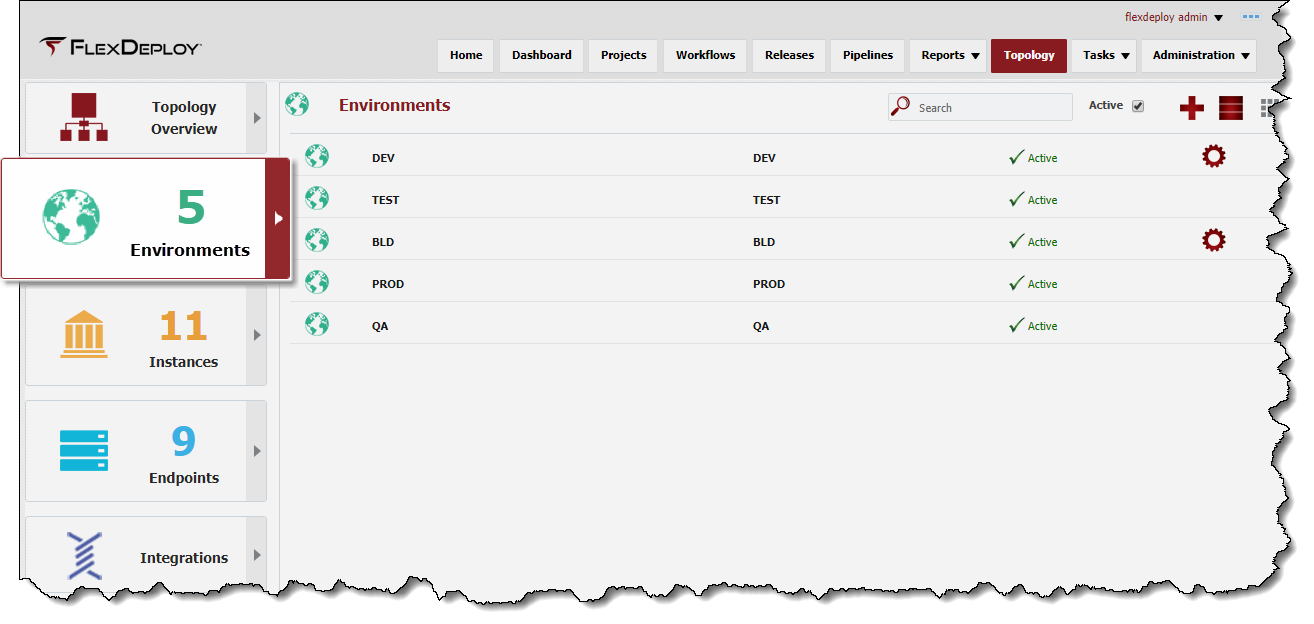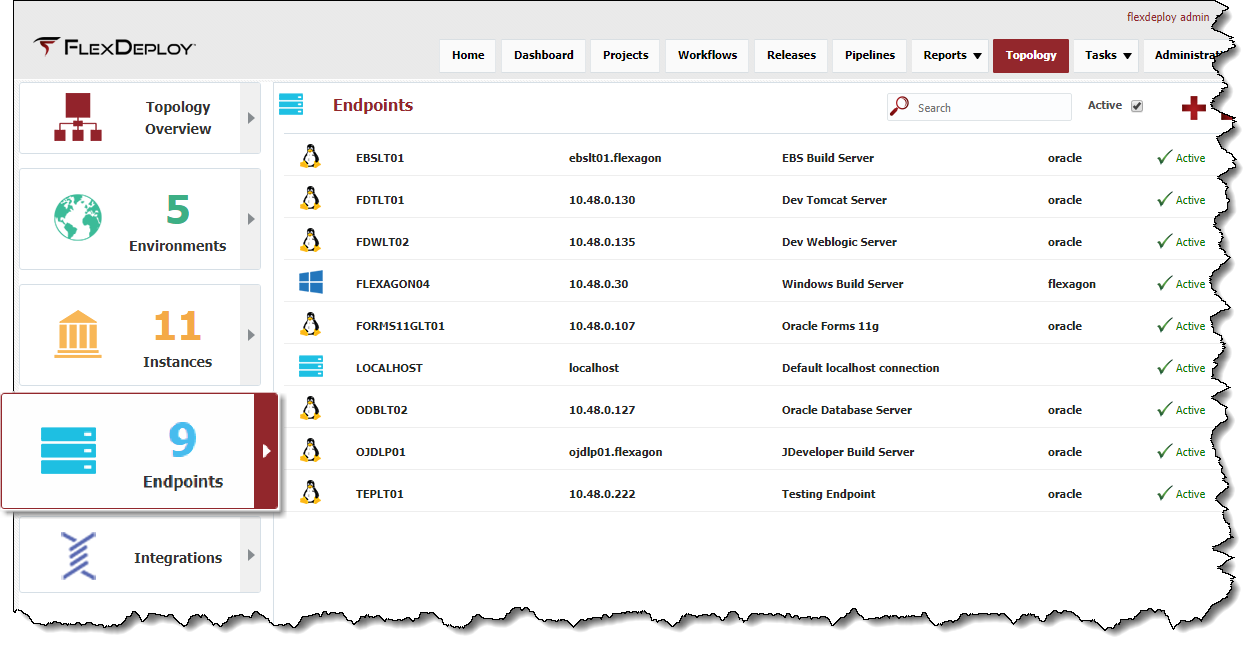Endpoints are the FlexDeploy representation of a device or virtual machine where plugins can be run. They hold connection and host details that allow FlexDeploy to connect to and perform commands on the server.
...
To view the configured Endpoints, select Topology from the menu, and then choose the Endpoints tab. Enter any optional search criteria and click the Search button.
Creating/Editing Endpoints
...
To inactivate an Endpoint click the Active link on the desired endpoint, and it will toggle to Inactive. This will hide that Endpoint after leaving the screen, until the Active checkbox is unchecked. To reactivate an Endpoint, click the Inactive link and it will toggle back to Active
Endpoint Directory Structure
...
<projectId>/<executionId>/temp
Directory for plugin execution to checkout and manipulate data or files until moved to the artifacts directory for storage.<projectId>/<executionId>/artifacts
Directory where artifacts are stored so they can be transferred back to the FlexDeploy server and stored permanently in the artifact repository.
<projectId>/<executionId>/internal
Directory where all internal FlexDeploy scripts are stored to execute the plugin step.
<projectId>/<executionId>/object-results
Directory utilized by partial deployment plugins to transfer the deployment status of each file back to the FlexDeploy server.
<projectId>/<executionId>/reports
Not currently utilized.
<projectId>/<executionId>/temp
Directory for plugin execution to checkout and manipulate data or files until moved to the artifacts directory for storage.
<projectId>/<executionId>/test-results
Directory for test plugins like Junit to place the test result to be processed.
<projectId>/<executionId>/transfer
Directory used to return file from a plugin execution and feed as input into another plugin operation. This directory is only used in very specific use cases.

